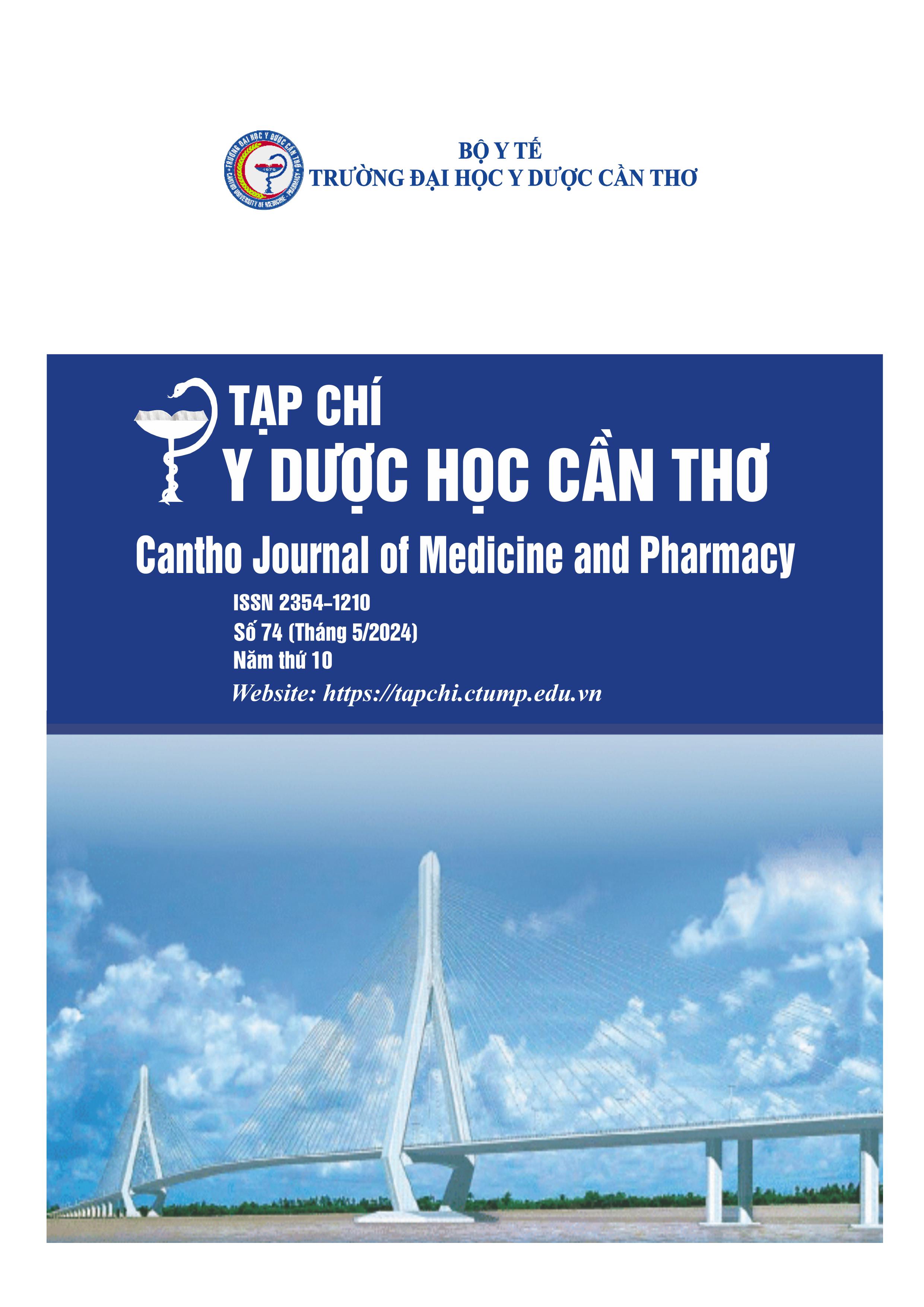RESEARCH ON LEVEL OF INFLUENCE ON MOTOR AND LIVING FUNCTION OF CEREBROVASCULAR ACCIDENT PATIENTS IN LONG HO DISTRICT, VINH LONG PROVINCE IN 2023-2024
Main Article Content
Abstract
Background: Stroke leads to severe disability and leaves many significant, hard-to-recover effects on patients. These effects not only impact daily life activities but also the quality of life of the patients. Objectives: To identify the rate of living functional impairment and impaired motor function in patients with stroke sequelae in Long Ho district, Vinh Long province in 2023-2024. Materials and methods: A cross-sectional study was conducted on 200 stroke patients being managed in Long Ho district, Vinh Long province in 2023-2024. Using the Barthel scale and the Fugl-Meyer scale. Results: The proportion of research subjects ≥60 years old was 75.0%, with males accounted for 50.5%. 37.5% of research subjects had secondary education, and the primary occupations were farming and selfemployment. The rate of right-sided paralysis was higher than left-sided, and the main cause of stroke was cerebral infarction, accounting for 65.0%. 25,5% research subjects in the study had sensory disturbances or circular muscle disorders. The rate of functional decline in daily living activities among the research subjects in the study was 95.0%, with motor function decline at 88.0%, and overall functional impairment at 86.5%. The study found a correlation between sensory and circular muscle disorders and functional decline in stroke patients. Conclusions: Stroke patients have very high motor sequelae, necessitating attention and enhanced rehabilitation for this patient group.
Article Details
Keywords
Cerebrovascular accident, functional decline in daily living, functional decline in motor activity
References
2. Mansfield A, Brooks D, Tang A, et al. Promoting Optimal Physical Exercise For Life (Propel): Aerobic Exercise And Self-Management Early After Stroke To Increase Daily Physical Activity—Study Protocol For A Stepped-Wedge Randomised Trial. BMJ Open. 2017. 7, Doi:10.1136/ Bmjopen-2017-016369.
3. Bộ Y Tế. Quyết định số 5331/QĐ-BYT ngày 23/12/2020 của Bộ Y tế về việc ban hành tài liệu chuyên môn Hướng dẫn chẩn đoán và xử trí đột quỵ não. 2020. Hà Nội.
4. Trần Thanh Phong. Nghiên cứu tình hình suy giảm vận động và đánh giá kết quả phục hồi chức năng vận động ở bệnh nhân sau đột quỵ não tại Bệnh Viện Đa Khoa Trung Tâm An Giang Năm 20202021. Luận văn tốt nghiệp bác sĩ chuyên khoa Cấp II. Trường Đại học Y Dược Cần Thơ. 2021.
5. Nguyễn Thị Ngọc Lan và cộng sự. Đánh giá kết quả phục hồi chức năng vận động của bệnh nhân nhồi máu não cấp bằng kỹ thuật Bobath. Tạp chí Y học thực hành . 2011. 789, số 12.
6. Nguyễn Quang Khiêm, Nguyễn Phương Toại, Lê Kế Nghiệp. Nghiên cứu mức độ ảnh hưởng về vận động, chức năng sinh hoạt ở bệnh nhân di chứng tai biến mạch máu não tại thành phố Vĩnh Long năm 2022-2023. Tạp chí Đại học Y Dược Cần Thơ. 2023, 64, DOI: https://doi.org/10.58490/ctump.2023i64.675.
7. Trần Thị Mỹ Luật, Đánh giá kết quả phục hồi chức năng vận động của bệnh nhân tai biến mạch máu não tại bệnh viện điều dưỡng-PHCN Tỉnh Thái Nguyên, Luận văn tốt nghiệp Thạc sĩ Y Học, Trường Đại Học Y Dược - Đại Học Thái Nguyên. 2008.
8. Lê Minh Hải và Võ Thị Xuân Hạnh. Mức độ phục hồi chức năng vận động và chất lượng cuộc sống của bệnh nhân tai biến mạch máu não trước và sau điều trị phục hồi chức năng tại bệnh viện Phục hồi chức năng – Điều trị bệnh nghề nghiệp. Tạp chí Y học TPHCM. Phụ bản Tập 22. Số 3. năm 2018.


